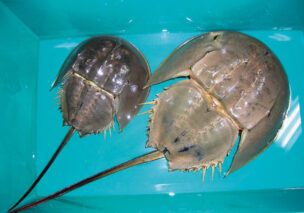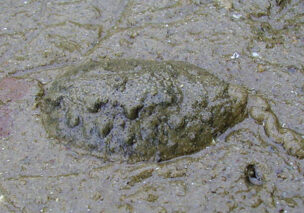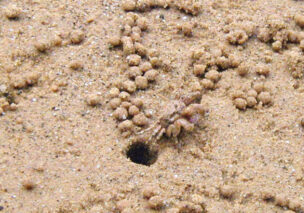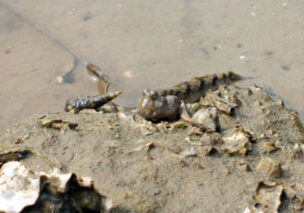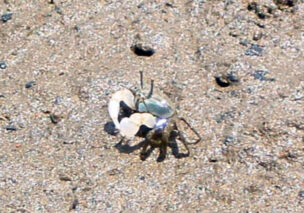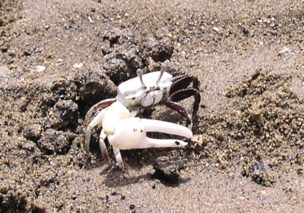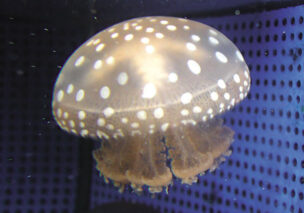砂浜・磯・干潟など、自然のままの海岸が残されている九十九島では、
島々の栄養を含んだ水が海へと流れ込み、多くの水生生物を育んでいます。
その中には、日本本土では絶滅寸前のものも少なくありません 。
Sand bubbler crab
April to November
Similar to the Ilyoplax pusilla, but the Ilyoplax pusillar prefers tidal flats, while the sand bubbler crab prefers sandy beaches, so you can judge which one is based on the quality of the soil.
Also, if a small sand dango of about 3mm spreads on the tidal sandy beach, it may be after eating the sand bubbler crab.
Instep width: about 1cm
Also, if a small sand dango of about 3mm spreads on the tidal sandy beach, it may be after eating the sand bubbler crab.
Instep width: about 1cm
Shuttles hoppfish
April to November
The shuttles hoppfish is a fish, but does not like to be immersed in water, and is usually on wet rocks or tidal flats. Fish can only breathe in water, while a shuttles hoppfish is breathing with a little water in the mouth. Also, when you escape as the name suggests, you escape while jumping on the water surface.
Body length: about 7cm
Body length: about 7cm








